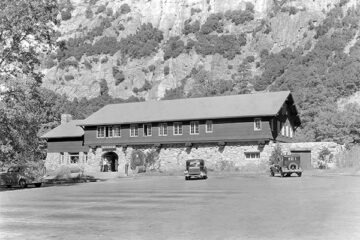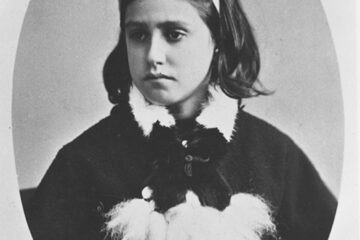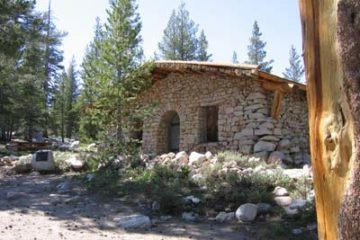Above: A Junior Nature School group in Yosemite, ca. 1938. Photo: Ralph H. Anderson, courtesy of NPS HPC.
Michael Ross, one of the naturalists who lead our Outdoor Adventures, often welcomes participants with a line from John Muir: “Most people are on the world, not in it.”
To be in the world – and in Yosemite – means exploring beyond postcard-perfect views. “Yosemite is not just important because of Half Dome and waterfalls,” Ross says, “but also because of the incredible plant and animal diversity that most people don’t see.”
Whether leading bird-watching workshops or wildflower walks, Conservancy naturalists help people experience that diversity firsthand, drawing on a tradition of field education in Yosemite that stretches back nearly a century.
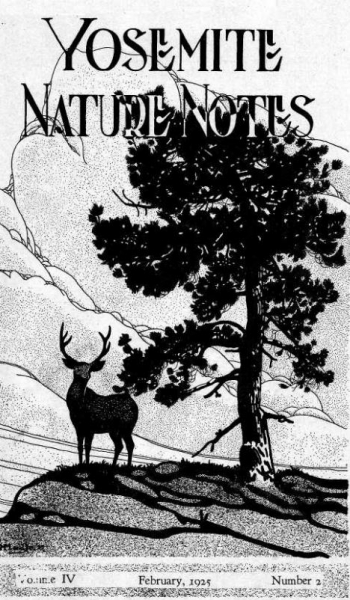
The Feb. 1925 issue of Yosemite Nature Notes, which included an article by Dr. Harold C. Bryant on the brand-new Yosemite School of Field Natural History.
In the early 1920s, the Yosemite Museum Association (the Conservancy’s predecessor) introduced Yosemite Nature Notes, a journal that ran for 40 years. The periodical offered articles on natural and human history by well-known naturalists such as Ansel F. Hall, Enid Michael and Carl P. Russell.
That very first issue, published on July 10, 1922, featured a fascinating array of musings, such as “Wednesdays Furnish Best Bird Trips” (no, birds were not more plentiful mid-week, but Wednesdays did bring naturalist-led bird-watching walks), “Wild Bears May Be Seen at the Bear Pits” (a relic from Yosemite’s pre-bear-management era), and “Rattlesnake Attempts to Swallow a Lizard Leg Big as Self” (but does not survive).
In 1925, the Association (renamed as the Yosemite Natural History Association), helped establish the Yosemite School of Field Natural History to fill a national void in training opportunities for aspiring naturalists. Like the participants who join our Outdoor Adventure programs today, Field School students learned from experts while immersed in a place renowned for its biological diversity and dramatic landscape.
The first Field School director was Dr. Harold C. Bryant, whose resume included the California Fish and Game Commission, U.C. Berkeley, and Yosemite, where he served as a seasonal ranger-naturalist. He would go on to an impressive career in the National Park Service, where he played a key role in shaping research and education, helped establish Olympic (1939) and Kings Canyon (1940) national parks, and served as Grand Canyon superintendent — but in 1925, he was focused on the immediate future: the first class of the new national park naturalist academy.
Bryant’s preview of the Field School, published in the February 1925 issue of Yosemite Nature Notes, presented the seven-week course as a way to meet increasing demand from students to feel more in the world than merely on it:
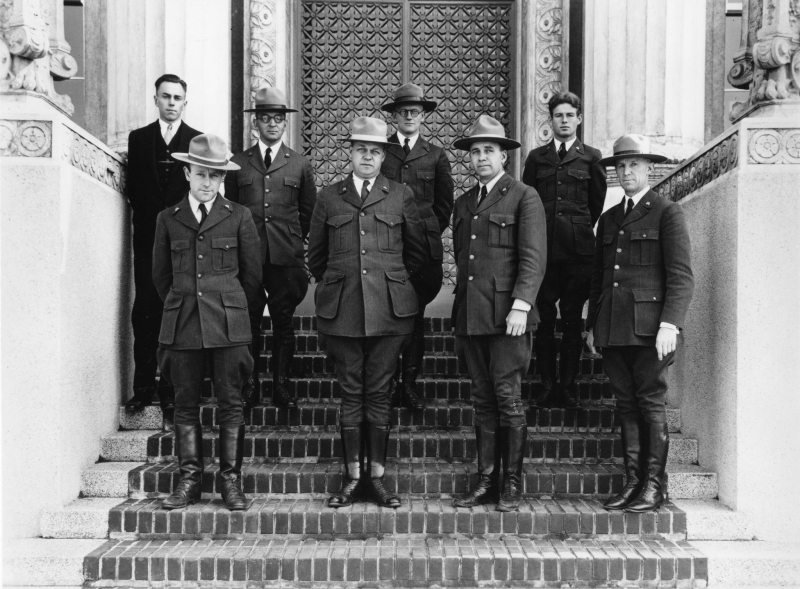
National Park Service ranger-naturalists at the First Park Naturalist Conference, held in Berkeley in November 1929 Photo: NPS.
Auspicious, indeed! The Field School’s first class of 20 students studied geography, geology, botany and zoology; took daily field trips to observe flora and fauna; and spent a week in the Yosemite high country focusing on alpine species.
Four years after that initial course, Bryant and his fellow Field School instructors joined rangers, scientists and scholars for the inaugural Conference of Park Naturalists, held at U.C. Berkeley in November 1929. Their goal: Discuss and define the role that naturalists play in national parks. Dorr G. Yeager, a ranger-naturalist from Yellowstone, described the group’s collective calling:
“Our duty … in educational work is not alone to teach; not alone to interpret; not alone to inspire. The three must be combined so skillfully, so subtly that the visitor upon leaving has, through our teaching and interpretation, obtained an entirely new outlook upon nature; an outlook which will not dim with his passage through the park gates but which will become ever brighter as he continues to seek out truths for himself.” — Dorr G. Yeager, “The Purpose of Educational Work in National Parks,” Proceedings of the First Park Naturalists’ Training Conference, Nov. 1-30, 1929
The Field School proved to be a perfect setting for inspiring and informing a new generation of skilled naturalists ready to rise to Yeager’s call. Over the next three decades, hundreds of budding biologists, botanists and ornithologists spent their summers in Yosemite, emerging with a valuable expertise and first-hand field experience, and eager to share their enthusiasm for the natural world.
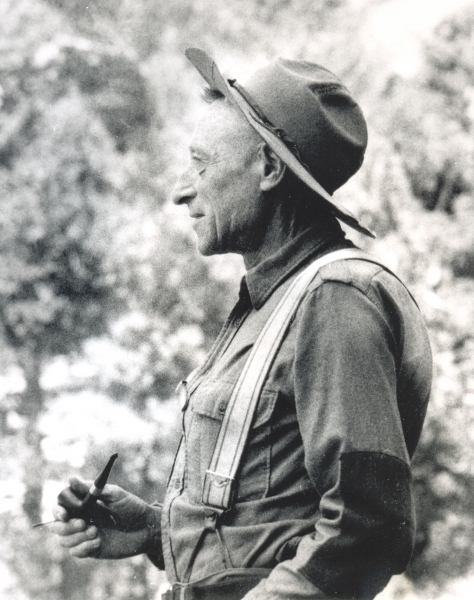
Yosemite Field School graduate Carl Sharsmith became the longest-serving interpretive ranger in the National Park Service. Photo: NPS.
Alumni went on to serve in parks across the country. One graduate, Carl Sharsmith, spent more than 60 years as a seasonal ranger-naturalist in Yosemite, mostly in Tuolumne Meadows. Well-known for his wildflower walks and vast knowledge of Sierra flora, Sharsmith became the longest-serving interpretive ranger in the NPS and inspired countless new naturalists along the way — including Michael Ross, who continues to share his late mentor’s legacy through alpine ecology-focused Outdoor Adventures.
Today, your support and participation ensure that Yosemite’s longstanding role as a leader in public education, and in inspiring new generations of naturalists, continues to grow.
The curiosity captured in Yosemite Nature Notes lives on in an eponymously named video series supported by our donors.
Grants for Yosemite’s Junior Ranger activities help tens of thousands of kids explore nature and stewardship each year through a now-national program with roots stretching all the way back to 1930, when the Yosemite Natural History Association helped create a Junior Nature School. (Check out the photo at the top of this post!)
And all year long, our naturalist-led Outdoor Adventures allow visitors to deepen their connection to Yosemite and develop a lifelong appreciation for being in the world.
Celebrate Yosemite’s field school legacy by taking part in one of our naturalist-led adventures! Depending on the season, you might be able to dig into meadow ecology during high country day hikes; look and listen for avian residents during bird-watching walks; explore the rugged habitat of alpine animals during backcountry backpacking trips; spend an evening learning from a Yosemite scientist during a “Dine and Discover” program; see winter adaptations in action during a snowshoeing trip; and much more. Curious about specific species or place? Connect with our Custom Adventures team to create a personalized experience with one of our naturalists.
A version of this story appeared in the Spring.Summer 2016 issue of Yosemite Conservancy Magazine. That issue and past ones are available on our website.

